How Mark Bridges Brought ‘Maestro’ to Life With His Costume Design
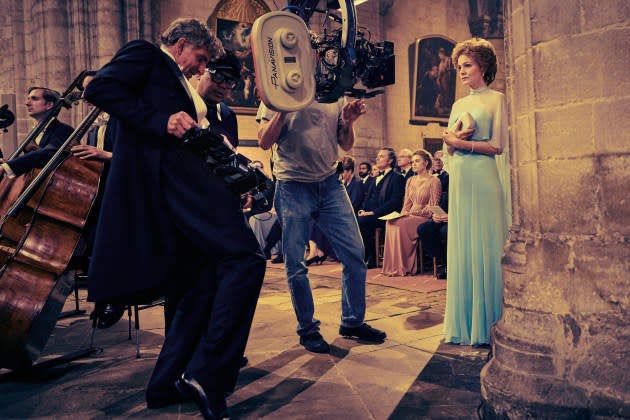
The conversation around costumes for the new Leonard Bernstein biopic “Maestro,” directed by Bradley Cooper, started while the actor was at work on a very different sort of project.
Cooper, who also plays the legendary composer in the film, was shooting “Licorice Pizza” alongside Mark Bridges, whom he first worked with on “Silver Linings Playbook.” During the summer of “Licorice Pizza” shoots, Cooper was beginning to test actresses to play Bernstein’s wife, Felicia Montealegre, and do camera and makeup tests, and he asked Bridges if he could come on board to help with the tests.
More from WWD
“And then I never left,” Bridges says.
“Maestro” reunites Cooper and Bridges for a look at Bernstein’s life and decades-long career, from his time in tuxedos onstage to country life in Connecticut. Working through such a span of time strongly appealed to Bridges.
“I love period work,” he says. “I rarely get a chance to explore the ’40s, when Leonard made his debut at Carnegie Hall, and I knew we’d have a lot of background for that, and that we had a lot of background for Felicia’s Broadway debut, and so I just loved doing the different periods and figuring out how to use the clothes and the silhouettes to tell a story and to illustrate the different moments in a person’s life.”
He describes Bernstein’s and Montealegre’s life as “well-documented,” so began research going through all the visual coverage of them. But he also picked up several important details from the biography of Bernstein’s life that helped inform costume choices.
“One of the things that I remember [from the book] was Felicia’s illness at the end of her life, and it talks about how she and her friends went to Madison Avenue and bought some embroidered linen nightgowns and things, which I know that [their daughter] Nina still has one of her mother’s nightgowns right now. So you’re reading about what her whole end of life was like. So that helps in making choices,” Bridges says. “There are things that you discover in research, but you don’t necessarily use them. You pick and choose on what you use from the research for the actual film.”
Most of the pieces were built off original shapes he found in costume rental houses in Los Angeles, after getting to physically touch and feel the fabric of a sport coat or dress. Then came time to make their own versions.
“We would have to make everything, just to make it seem like who they were. They were people who shopped on Madison Avenue or Fifth Avenue and had nice, beautiful clothes,” Bridges says.
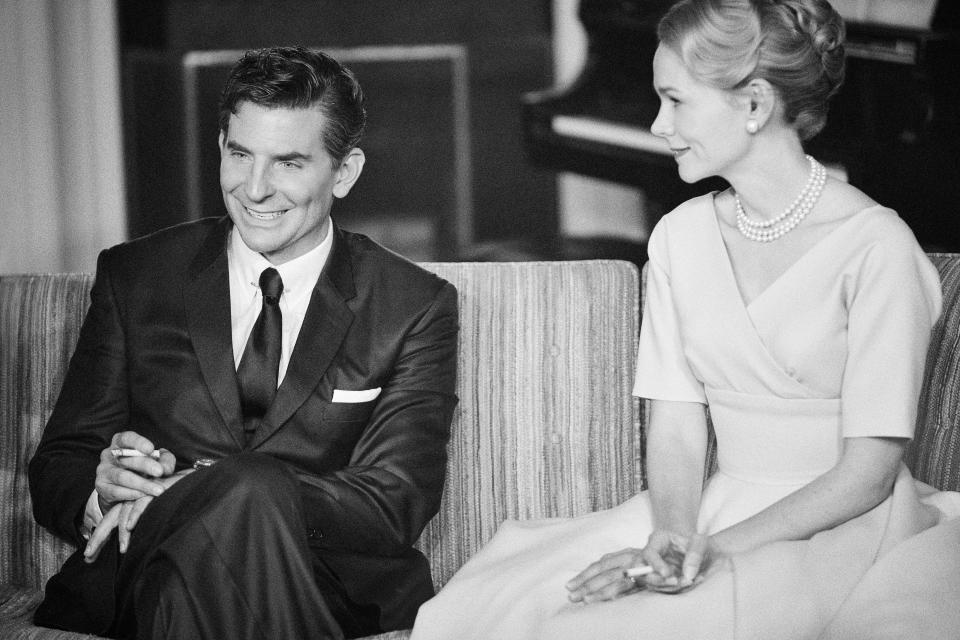
A highlight included recreating a Chanel suit for Montealegre, played by Carey Mulligan.
“Chanel was very supportive. They gave me options for fabric. They gave me options for trim. They let me choose the color of the blouse and the fabric for the lining and things. And then we made that in-house,” he says.
In a scene later in the movie where Montealegre attends one of Bernstein’s performances, she wears a flowing blue gown that Bridges loosely based on a Halston dress.
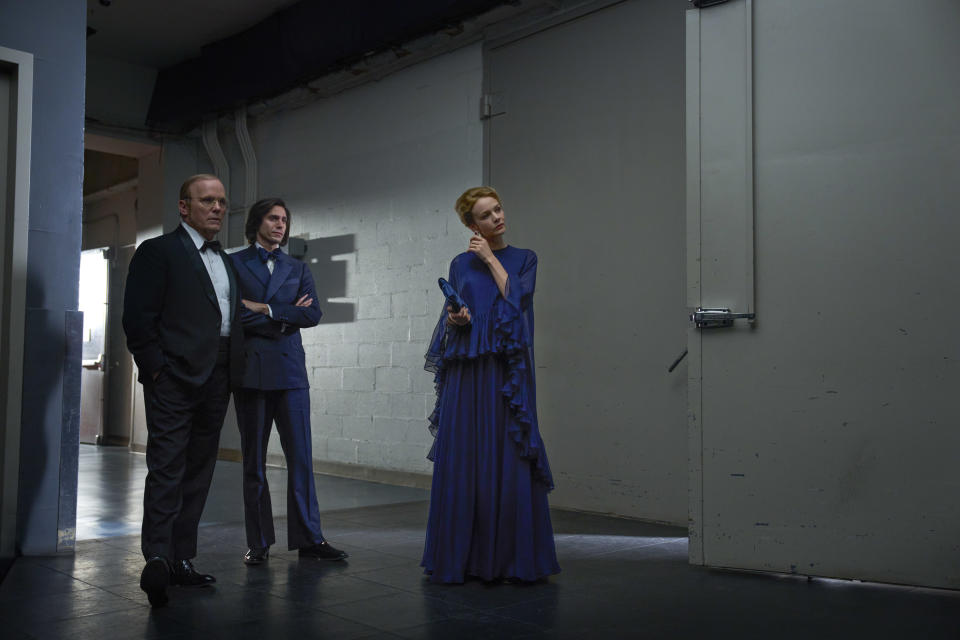
As for Bernstein, he is seen in a variety of well-tailored suits throughout.
“I love his suits. I love that houndstooth suit that he wears when we meet Tommy [Cothran, the music director]. He looks really elegant in that,” Bridges says. “There’s the white turtleneck and white sweater that he wears during the interview. That’s really something that Lenny wore around in his country house, and I felt like that was a perfect dramatic moment to use that. It’s so bold and beautiful.”
The costumes also reflect Bernstein’s different emotional stages in life, as seen in a neck scarf and striped shirt moment or a jumpsuit look.
“It’s talking about him and what he’s going through as a person,” Bridges says. “You just make choices along the way; we subsequently see him in a jumpsuit, and sort of leaving the family and things like that. So that striped shirt with the neckerchief kind of tells what upheaval he’s going through in his own life.”
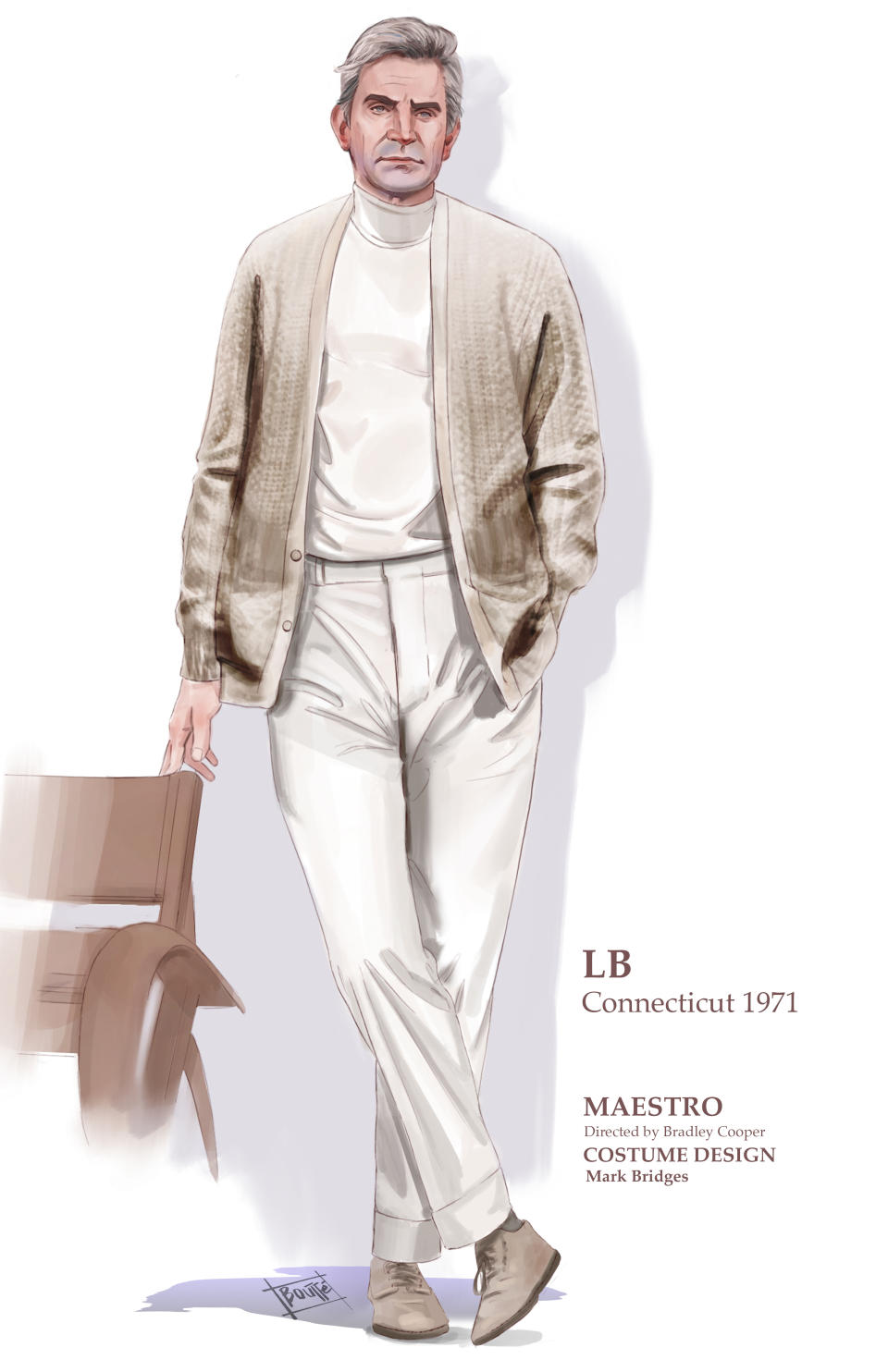
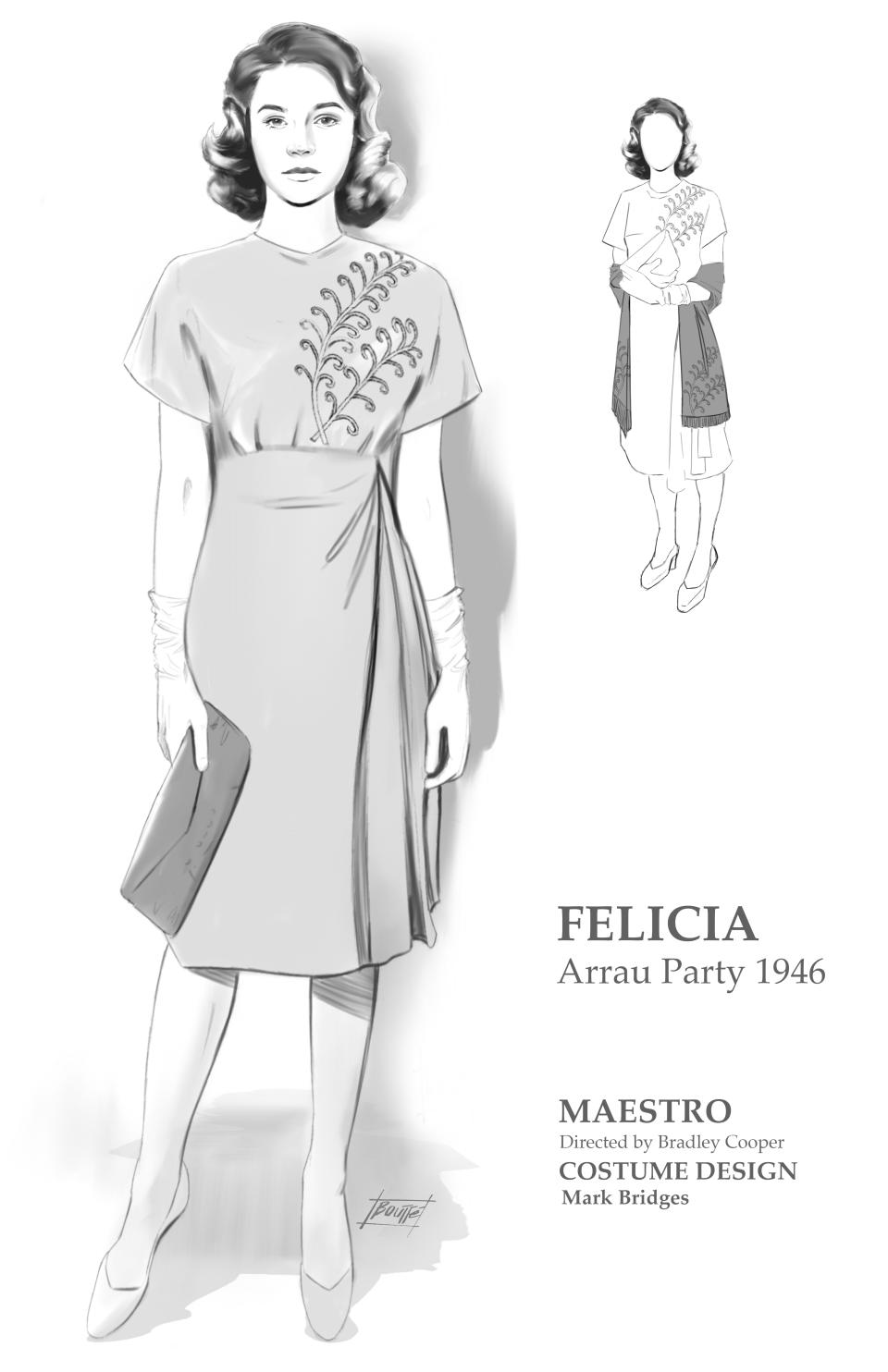
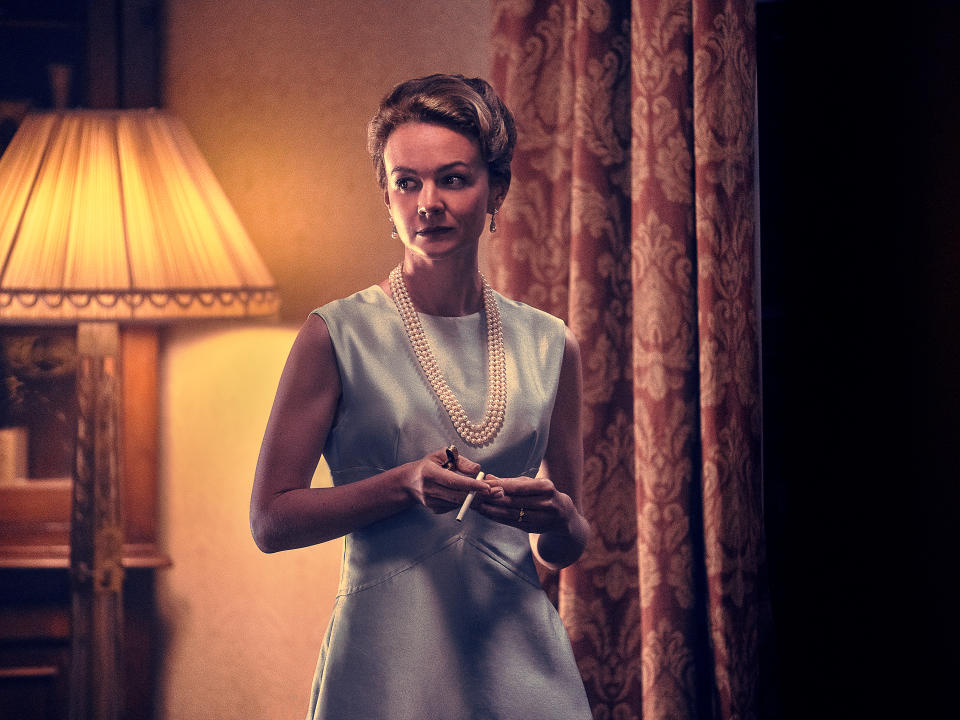
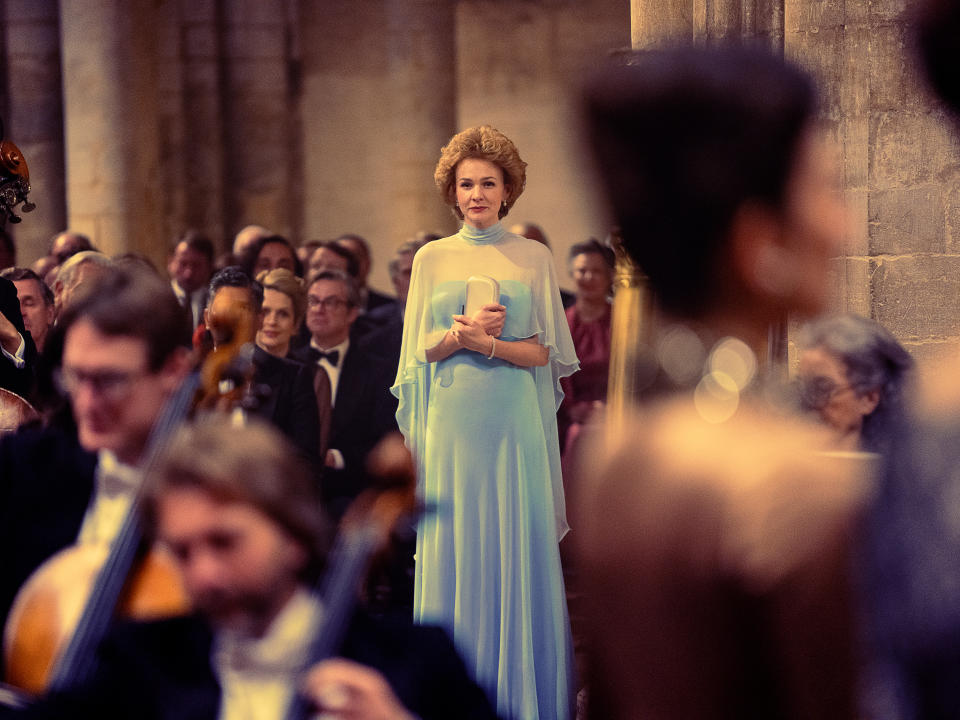
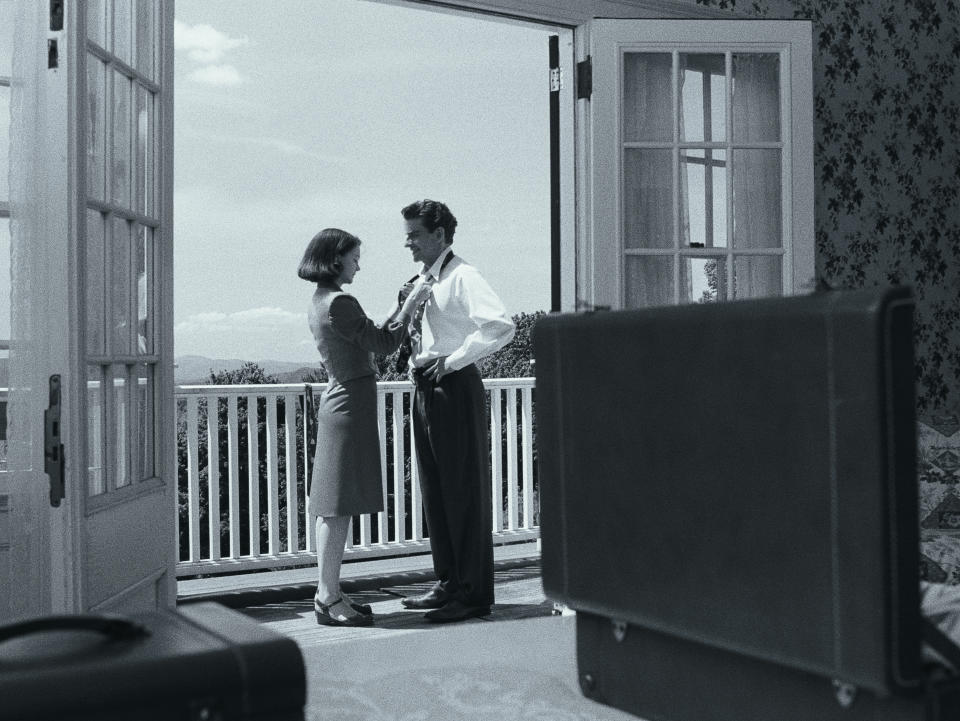
Best of WWD